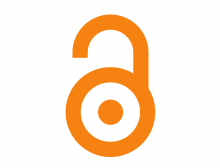Journal Citation Reports to feature open access data

Clarivate Analytics has announced the addition of open access data to Journal Citation Reports profile pages to increase transparency around open access models in scholarly publishing. Journal Citation Reports is an annual journal report from the Web of Science, the world’s largest publisher-independent global citation database.
The new data show each journal’s articles by access model. The aim is to provide the research community with transparent, publisher-neutral information about the relative contribution of articles published free to read and re-use under Creative Commons licenses (‘gold open access’) to a journal’s overall volume of content and citations. The new feature is in beta until the launch of the 2020 Journal Citation Reports in June.
For the approximately 5,200 hybrid journals in Journal Citation Reports, readers will now be able to identify the number of papers published via the traditional subscription model, and those published via Creative Commons licenses.
Nandita Quaderi, editor-in-chief of the Web of Science, said: ‘This is the latest initiative in a long line of actions Clarivate has taken to support open research. When Dr. Eugene Garfield published the first Journal Citation Reports in 1975, all journals were printed and open access did not exist. How journals are published and accessed has changed, but the purpose of Journal Citation Reports remains the same: to provide a rich set of data to help the research community better understand a journal’s contribution to the literature and influence on scholarly discourse.
Introducing additional open access data into the Web of Science Journal Citation Reports will help us all understand the impact of research published via gold open access. With the additional data provided, funders and publishers will be able to make better informed, more confident decisions on open access policy and strategy, furthering their objectives of increasing transparency around open access to academic research.’
For more details visit the Clarivate blog.







